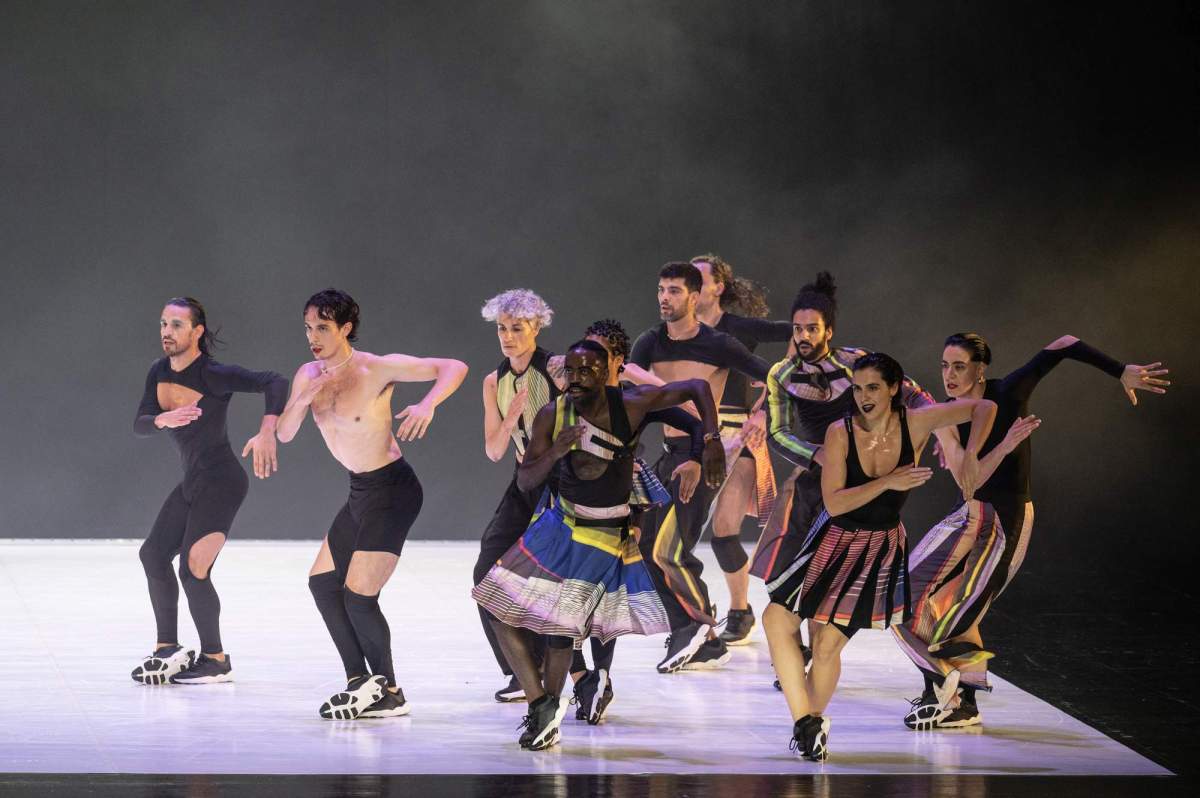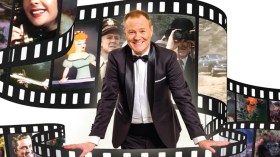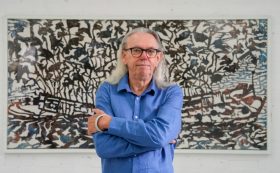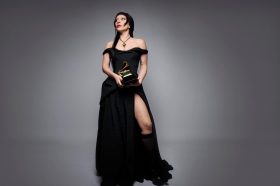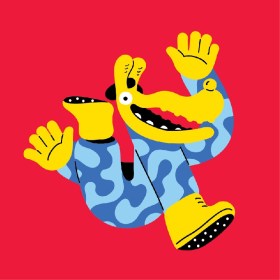Portuguese choreographer Marco da Silva Ferreira is a hot-ticket name within the international dance scene right now.
A self-taught dancer who got a big break in the dance world after winning Portugal’s version of So You Think You Can Dance in the early 2000s, he went on to work with much-lauded artists like Hofesh Shechter, before establishing himself as a choreographer in his own right with his dance company Pensamento Avulso, founded in 2013.
Most recently, da Silva Ferreira’s work CARCAÇA (2022) has been shortlisted for the dance world’s new international prize – The Sadler’s Wells Rose International Dance Prize, billed by its creators (Sadler’s Wells), as the dance world’s equivalent of the Booker or Turner Prizes.
Being shortlisted as one of four finalists in The Rose Prize in its inaugural year is a significant milestone for this artist … but what of the nominated work?
For its Australian premiere at Perth Festival, CARCAÇA’s cast of nine – which includes da Silva Ferreira – are indomitable and unstoppable, and their dynamic personalities and prowess on stage are what gives this work its light.
When this diverse group of dancers move as one entity – which happens frequently throughout the show – they radiate athleticism, endurance, speed and precision. Even when the choreographer raises the stakes and implements repetitive, borderline-militaristic choreographic scores to João Pais Filipe’s live percussive beats, the dancers never turn into a unified machine, or mindless automatons.
Rather, the opposite is true. The more the work motions through scenes referencing trance and ritualistic dancing – including a nice nod to postmodern dance legend Lucinda Childs’ looping, transcendently repetitive work Dance (1979) – CARCAÇA allows these performers’ individual personas to be explored.
Somewhat ironically for a work that presents itself as an investigation of whether dance can foster connection, unity and equality, the piece holds a lot of space for individual expression – and that is a truly beautiful thing.
As the dancers dart, stalk and march across the stage, according to da Silva Ferreira’s imaginative use of space and in styles hinting at his street dance, vogueing and even classical influences – they remind us of two things: one is the importance of freedom of expression and two, what it means to come together and connect.
It doesn’t take long, however, from a conceptual perspective at least, for the wheels to start to fall off.
As the work progresses through its second, third and fourth ‘chapters’ we are taken to some strange places that interrupt our emotional connection with the performers, and muddy our understanding of the work’s overall intent.
Read: Dance review: Lewis Major: Triptych, State Theatre Centre of WA, FRINGE WORLD
Departing from its earlier scenes that provoked joy, awe and wonder, we are suddenly transported to more traditional, folkloric territory where we witness the dance jams of individual performers who ‘scat’ in front of their peers who watch and cheer them on… But why?
Then, almost as abruptly, we are submerged into a more solemn, politically-charged space, where the performers turn into a choir of activists, singing their defiance against a repressive, fascist regime (though it isn’t clear which one).
These scenes, driven at times by percussionist Pais Filipe’s rhythmic beats, at others by electronic sound artist Luis Pestana’s layered scores, attempt to weave political ideas into what was formerly more abstract explorations of rhythms and repetition and, in doing so, they plunge the work into a confusing mess that really doesn’t recover until its concluding scene. (The final scene is actually one of the work’s highlights – it is absolutely terrific.)
But the disarray of its middle sections, which dart from one place to the next with no coherent thread, leave us disoriented and questioning its core foundations.
At one point, we are even served a series of facile political platitudes that ultimately declare: “ALL WALLS FALL”. But, unfortunately, our present day world bears little resemblance to a place where barriers are coming down, and the politics of equality are so obviously more complex than that.
In the end, the artist’s attempt to have a conversation about the world while investigating his artistry in the context of cyclical movement and rhythmic scores, proves a major diversion from what would have otherwise been a complete knockout of a dance show, fuelled as it is by an ensemble of incredibly generous, skillful performers.
CARCAÇA, choreographed by Marco da Silva Ferreira, presented by Perth Festival, season runs until 9 February 2025 at State Theatre Centre, Perth.
Artistic Director and Choreographer: Marco da Silva Ferreira
Artistic Assistant: Catarina Miranda
Performers: André Speedy, Cácá Otto Reuss, Fábio Krayze, Marc Oliveras Casas, Marco da Silva Ferreira, Maria Antunes, Max Makowski, Mélanie Ferreira, Nelson Teunis, Nala Revlon
Sound Technician: João Monteiro
Lighting Designer and Technical Director: Cárin Geada
Music: João Pais Filipe (percussionist) and Luís Pestana (electronic music)
Costume Designer: Aleksandar Protic
Scenographer: Emanuel Santos
Anthropological Studies: Teresa Fradique
Portuguese Folk Dance: Joana Lopes
Production Director: Mafalda Bastos
Executive Producers: Mafalda Bastos, Joana Costa Santos
